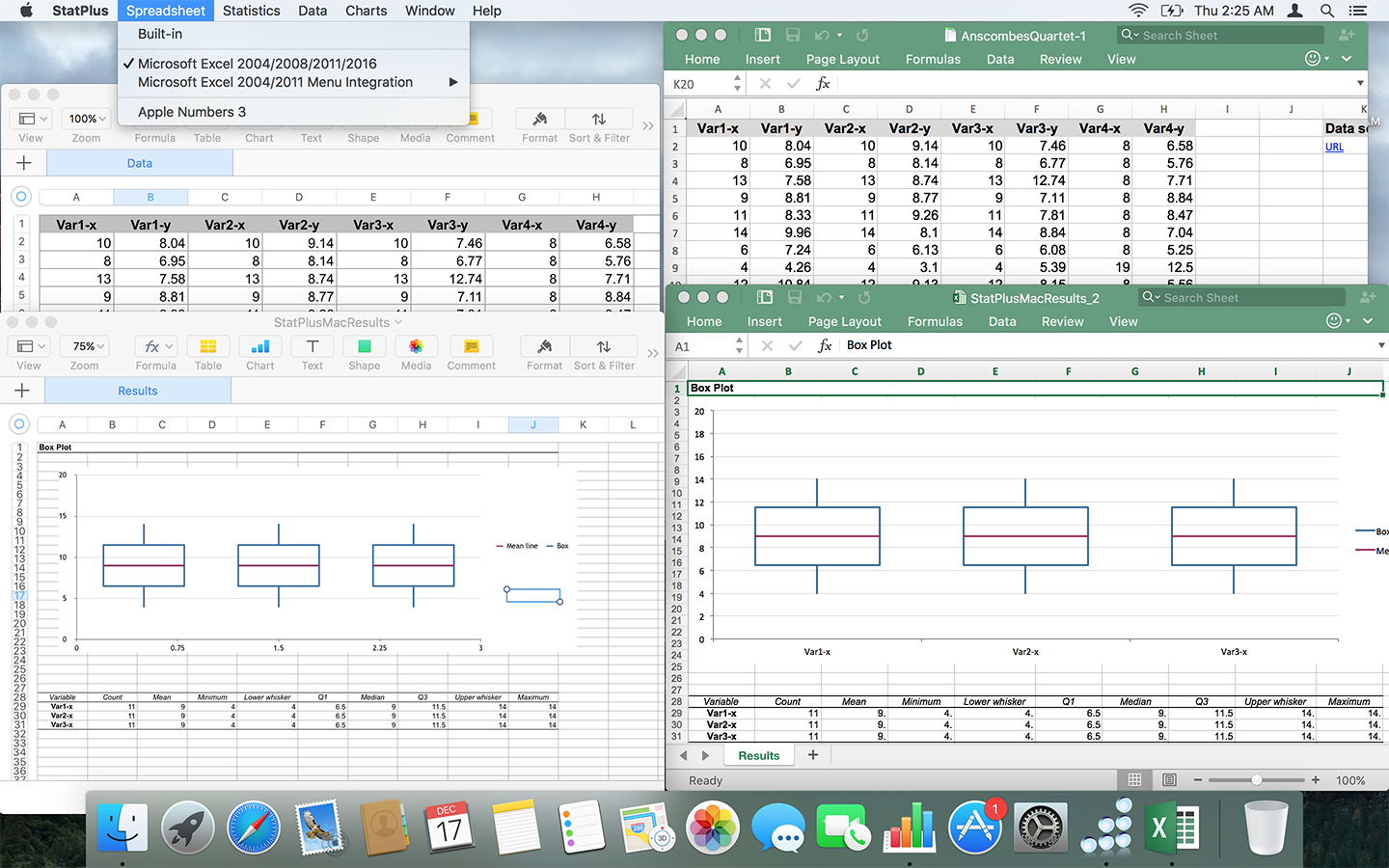
If a one-sample t-test result is statistically significant, we would say that our mean is significantly different than the chosen value. 05, then we would consider our results statistically significant. That is very, very small for a p-value – much less than our cutoff of. So, the current result of 2.01E-08 is actually. If it is negative, we move the decimal to the left and make the number smaller. If it is positive, we move the decimal to the right and make the number bigger. The number after the E represents how many spaces we should move the decimal point. How does a number have an “E” in it? Well, when a number is extremely small or large in Excel, it is sometimes reported in scientific notation. The number highlighted below is our p-value. Is that big? Is it small? It is fairly difficult to interpret, so it would be best to turn to our p-value. It is our primary result or effect size, and it is 7.630 in the current example. Now, look at the number highlighted in the picture below. Already, we can tell that this is larger than our chosen number of 80. This means the class’s test grade was, on average, a 90.9. In the current example, we have an average of 90.9. So what do these numbers tell us? First, look at the highlighted number below. Did you get the same numbers? If so, great! If not, start from the beginning and try it again.

Yay! Take a look at the image below and compare your results. If you are using the example dataset, you should highlight the two number 80s. Just click and drag on the numbers in the first column, and then press the highlighted button.Ĭlick on the other button highlighted below:Īnd do the same thing, but highlight the numbers in the second column. In this example, I do NOT include the label. Now, click on the button highlighted below:Īnd then click and drag overtop all the data in Column A. Because Excel does not have a one-sample t-test command, we must trick it into thinking those two numbers that we typed are another sample. Although we are performing a one-sample t-test, you should click on “t-Test: Two-Sample Assuming Unequal Variances” and then click on “OK”. This is where it gets a little confusing. If you do not have this in your version of Excel, check out my page on Activating Data Analysis in Excel. With the numbers entered, now click on the Data tab at the top, and then click on the Data Analysis button. Your Excel should look like the image below: So, type “80” (without quotation marks) into the second and third rows of the second column. In the current example, we chose the number “80”. In the second and third row, type the number that you want to compare the data against. In the first row, type the word “Number” (without quotation marks), which is our label. Let’s start by typing three things into the second column. Now, we need to start by tricking Excel into calculating the one-sample t-test for us. The data should look like the image below. This will determine whether the students’ average grades are significantly different from a value of 80. In the example dataset, we are comparing the test grades of a class to the chosen value of 80.
#STUDENT T TEST ON EXCEL FOR MAC DOWNLOAD#
If you don’t have a dataset, download the example dataset here. Now that we know what a one-sample t-test is used for, we can now calculate a one-sample t-test in Excel.

Of course, there are other situations in which a one-sample t-test may be useful, so keep your eyes open for these situations!


 0 kommentar(er)
0 kommentar(er)
